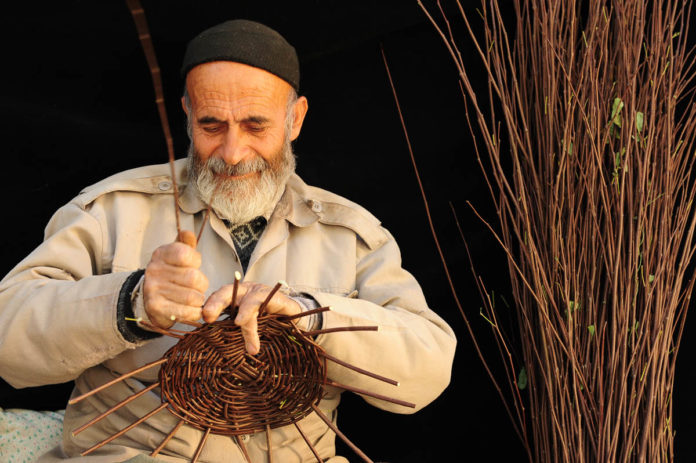Mat weaving has been one of the most ancient hand-woven arts of human beings, which were supplied by weaving herbal fibres into each other. The artistic taste of the weaver and utilisation of different pigments adds to the variety of these plain products. The historical precedence of the utilisation of herbal fibres to supply the requirements of the daily life is even older than the textile industry, so that the people in each region, according to the herbal coverage of their environment, have become skilful in one branch of herbal handwoven objects such as basket weaving and mat weaving.
As one of the most ancient manual industries of Khoorobiabanak, mat weaving has been done there since long ago as a secondary profession beside the main job of agriculture. The existence of large gardens of palm trees in this region has caused mat weaving to be known as a native profession in this township.
The mat weaver uses two types of date leaves: the newly grown leaves, used for delicate fine products, and the old ones. The mat weaver picks the date leaves and dries them in the sunlight. Having completed this process, s/he then puts the leaves in water and dyes them in different colors of green, red, and blue. Then depending on the desired type of weaving, the damp and wet leaves are woven together. The delicate fibres which are brown and are grown around the palm are used for some weavings such as rope and doormat. Among other mat woven products are fan, hat, mat carpet, sweep, basket, doormat, dates containers and locally made ropes.
This entry is supplied by the Iran Culture, Heritage and Tourism Organisation – Isfahan






Good day! Can I use the information about mat-weaving for my module making?
Your work in sustaining this craft is welcome. It would be appreciated if you could acknowledge this source.